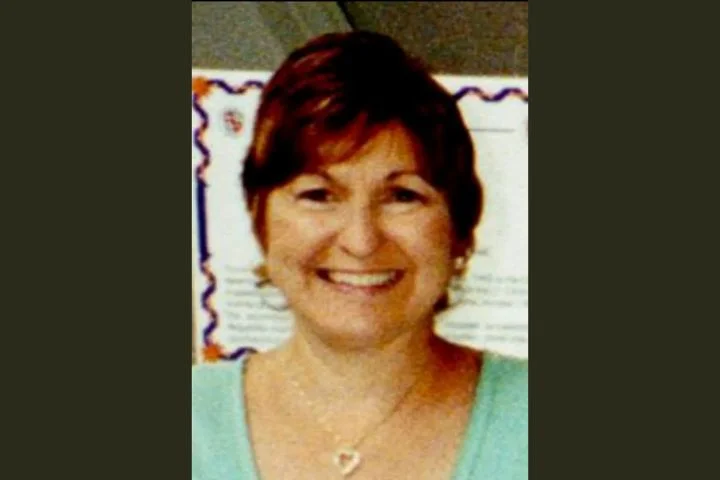When Patsy Nonemaker left her Shepherdsville, Kentucky, house around 4:00 pm on Friday, December 31, 1999, she wasn’t in the best state of mind. The 55-year-old had st*ruggled with de*pression and mental illness for years, and 1999 had been particularly rough for her. Her beloved dog went missing in September, and her father d*ied on December 19th. Shortly after her father’s death, her doctor increased the amount of medication she was taking; she was still adjusting to this dose when she walked out of her front door on New Year’s Eve and vanished.
Patsy had spent much of Friday afternoon with her husband of 36 years, Paul Nonemaker. A few hours after the couple ate lunch, Paul left the house to run some errands. When he got home at 6:00 pm, he was surprised to discover that his wife wasn’t at home. Her car was in the driveway and her purse was in the master bedroom, but Patsy was missing.
Due to Patsy’s fragile mental condition, Paul was immediately concerned. Assuming that she had to be on foot, he drove slowly around the neighborhood, searching in vain for any sign of Patsy. A couple of Paul’s neighbors recalled seeing Patsy; she had asked them if they had seen her missing dog. When they told her that they hadn’t, she walked off. They last saw her heading down Lees Valley Way toward Highway 44 shortly after 4:00 pm.
Patsy’s dog had been missing for a while, and the neighborhood had been searched several times. However, Patsy may have decided to look for her beloved pet again because she was mentally unstable. Paul saw that Patsy was upset that the dog had gone missing. “She was already very sad, and that dog kept her company while I worked.”
As the night went on and the temperature dropped, Paul worried more and more about Patsy’s safety. She had gotten lost before and made it to Michigan, but she always had her purse and other things with her. She only had the clothes on her back when she left the house this time. All of her personal things, like her wallet, keys, ID, and other things, were left behind.
Paul told the Bullitt County Sheriff’s Department that his wife was missing. The sheriff’s office told Paul that Patsy was an adult and could come and go as she pleased, even though she had a mental illness. Detective Charles Mann told him that he would report Patsy missing and in danger to a national database, but there wasn’t much he could do to find her. Officer Mann told a reporter, “I feel bad for Paul; I don’t know what to say to him.”
Paul, who worked for United Parcel Service as a flight training supervisor, asked some of his friends and coworkers to help him find his wife. The International Pilots Association in Louisville offered to help get posters up about Patsy’s disappearance all over the county. They also put a picture of Patsy and information about her case on their website.
The International Pilots Association helped Paul set up a large search for Patsy on the ground. Helpers went through the neighborhood and slowly walked all the possible routes Patsy could have taken to get to the closest highway. They didn’t find anything.
She hadn’t talked to her family in days, so they were afraid the worst. As reported by the news media, Paul said that Patsy had gone missing a few times before, but this time was different. “I think someone picked her up. When she goes missing, she calls me in four or five days to let me know she’s okay. It had been months, and Patsy was still missing.
As word got out that Patsy had gone missing, police got a few tips about possible sightings of the missing woman. One was from a gas station worker on Highway 44. He told police that he was sure Patsy had stopped at the gas station the night she disappeared. People were being asked if they had seen her dog. The woman didn’t look like she was in any kind of trouble, and the gas station worker didn’t see where she went after leaving.
Paul did everything he could to get people to talk about his wife’s disappearance, but he quickly learned that an adult missing wasn’t newsworthy. He begged several TV shows, such as America’s Most Wanted, Dateline, and 20/20, to do a story about Patsy, but they all said no.
To find Patsy as soon as possible, Paul called the FBI for help. There was a chance that Patsy got into a car that took her outside of Kentucky, but there was no solid evidence to support this idea. The FBI told Paul that they didn’t have any control over the case and couldn’t help.
Paul found it frustrating because all he wanted to do was find his wife. “Most states will look for missing kids, but not adults.” So every time I try to go after it, I end up in a dead end. It makes you sad. I’m very sad about losing her. She left on her own, but I know she wasn’t feeling well.
Patsy’s missing person flyers were sent all over the country with the help of the International Pilots Association. Possible sightings of her were reported in several states. Paul was desperate to find his wife, so he checked into every report. He was on the road for hours, going as far as he had to in order to see everything. They could not all be proven.
As the anniversary of Patsy’s disappearance drew near, her family went through their first holiday season without her. On December 30, 1999, they chose to honor Patsy’s life with a party. Even though it was hard for them to say, Patsy’s family and friends didn’t think she would be found alive.
Paul was sure that Patsy would have tried to get in touch with him if she could. “She always called us when she was going to be late.” If she were smart, she wouldn’t try to hide from us. Because she cares about us worrying about her, she is kind.
Timothy Nonemaker, Patsy’s son, didn’t think his mom would go missing on her own. “Every time she left, she called a few days later to let everyone know she was okay.” She didn’t take her purse or car, though—she just left and wasn’t seen again.
Detective Mann told the family that they had followed all the leads in the search for Patsy and that there was nothing else that could be done because there was no solid evidence of foul play. “Everything we could do has been done.”
Police and the way they handled Patsy’s disappearance were criticized by her family. Timothy said, “The police didn’t look into it.” They most likely would have found her in the first 24 hours if they had done something while she was around.
The Kentucky State Police Missing Persons Unit offered to help with the search a year after Patsy was last seen. They put information about the case on flyers and sent them to all eight police departments and sheriff’s offices in Kentucky and the seven states that border it. They also sent Patsy’s missing poster to every Wal-Mart in eight states and to shelters for the homeless.
The people who cared about Patsy were glad that the Kentucky State Police were finally ready to help, but they were afraid it was too late. Paul said, “It’s pretty cold out there now.” We’re not very hopeful… He promised to keep looking on his own, and he kept checking into every possible sighting that was told to him. Tips stopped coming in for a while, and Patsy’s case went cold.
The family and friends of Patsy were heartbroken that they had no information at all. Paul told a reporter in 2001, “It’s hard to have closure when you don’t know what happened to her.” This year has been the worst of my life. I’m still very sad about losing her and miss her a lot. It’s almost impossible to understand why we still don’t know what happened.
Patsy has now been missing for more than two decades. There are several theories about what might have happened to her but no solid evidence to support any of them. It’s possible that Patsy wandered off the highway while looking for her dog and got lost in a wooded area. She might have gotten a ride with someone who took advantage of her vulnerable state and killed her; she could have hitched a ride to the nearest city and blended in with the homeless population. Cold case detectives continue to hope that someone will come forward with the information they need to finally determine what happened to Patsy.
Patsy Ruth Nonemaker was 55 years old when she walked away from her home in Shepherdsville, Kentucky on New Year’s Eve 1999. Patsy suffered from depression and other mental illnesses, and she had wandered away from home several times before, but she always contacted her family within a few days and made arrangements to be picked up. Patsy has brown eyes and brown hair, and at the time of her disappearance, she was 5 feet 2 inches tall and weighed 140 pounds. Patsy was last seen wearing gray pants, a blue or gray shirt, a white scarf, and brown suede shoes; her long, black overcoat was missing from the home and it is believed she was wearing it. She was also wearing several pieces of jewelry, including a diamond and gold wedding ring and a heart-shaped diamond necklace. Patsy has a mole on her left cheek and her right index finger is shorter than normal. If you have any information about Patsy, please contact the Bullitt County Sheriff’s Department at 502–543–2514.






